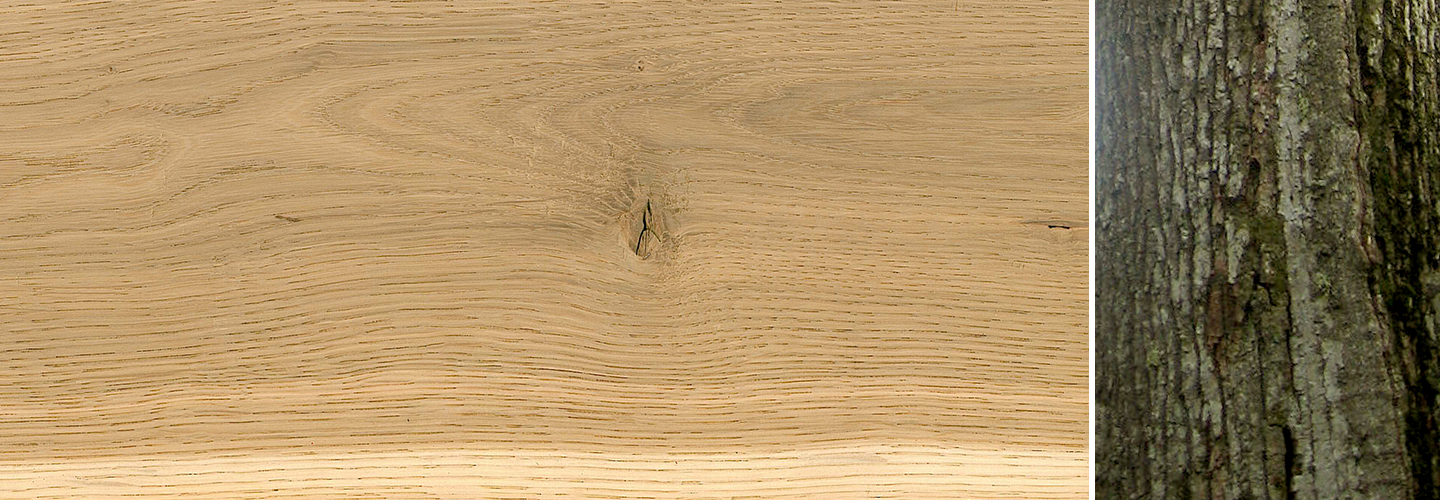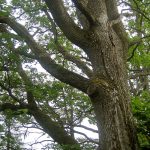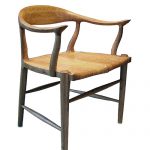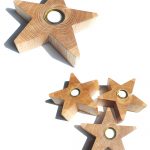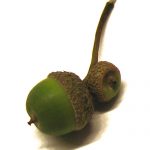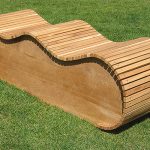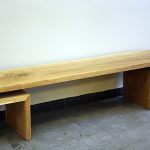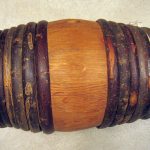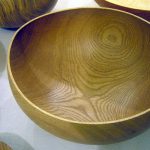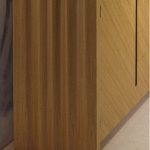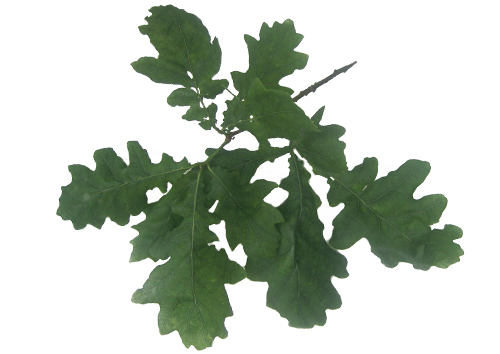
- Skogek (S)
- Oak (GB)
- Stieleiche (D)
- Le chêne (F)
The Latin name ”robur” means strength which a large oak indeed exudes. Oak creates a diverse environment around it. For example wood anemones and other grasses grow close to oaks.
Distribution
- Oak is common all over Europe and partly in Asia.
- In Finland the oak zone goes right through the south coast, from around Porvoo to Uusikaupunki, the archipelago and the Åland Islands. Planted oaks also grow more north.
- The oak forests of the south coast have many times been the object of selective fellings. The best trunks have especially been felled for shipbuilding.
- English oak is the only oak species growing wild in Finland.
- In the Åland Islands oaks that have a girth of over 1,70 m are protected.
Habitat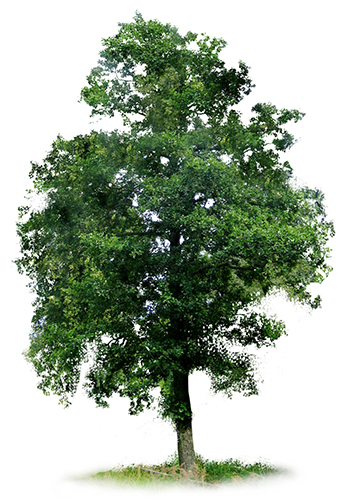
- Oak grows best in fresh forests with nutritious soil.
- It also survives in soils that are not so rich in nutrients. However, it thrives best in grassy woodlands with clayey soil.
- It does not withstand swampy habitats, stagnant water or repetitive dryness.
- Oak requires a lot of daylight, especially after the first years.
- Thanks to its strong taproot and sturdy root system, oak withstands strorms extremely well.
- Oak is easily damaged by pea-green oak curls and spring frosts.
Growth characteristics
- Oak can grow as high as 30 meters and 1.5 meters in diameter.
- Its lifespan is very long, and it grows well even after 150 years.
- The bark of the trunk is deep grained and dark brown. The crown is domed and the branches fork upwards and sideways.
- Oak renews itself well. Jay and squirrel are the most important acorn spreaders.
- It is possible to breed a branchless trunk by cutting and pruning the branches. Oak withstands aggressive pruning.
- Unlike elm and ash, oak can form whole forest stands in Finland.
Properties of the wood
- The sap and heartwood can be clearly distinguished. The sapwood is thin and fairly light in colour. The colour of the heartwood varies from light yellowish to semibrown, but usually has a reddish shine which darkens later.
- Oak wood is valuable, especially the dark and heavy heartwood. The wood is hard, very heavy and densely grained.
- The heartwood is highly rot resistant and it copes well with water.
- The core radiuses can be clearly distinguished in a cross-section and on a radial surface.
- A trunk of a good oak is heavy, straight, branchless and over 35 cm in diameter at chest height.
- Due to a high tannic acid content, insects barely damage oaks.
- Surface finishing is easy, but the vessels have to be thoroughly filled before polishing. Debarking and veneering the wood is easy. Glues, screws and nails hold well.
- The wood has to be thoroughly dried to prevent it from cracking. Dry wood is easy to work. Cracking can also appear after the drying in the heartwood. The weight of air-dry sawn timber is 750- 800 kg/m3.
- A-class wood is free of knots, even in colour, and it does not have damage caused by rot. It is used to produce furniture and parquets. It is lathed and veneered and used in different inner and outer structures.
- B-class oak wood is knotless and a larger amount of sapwood is acceptable. It is used for inner and outer structures, parquets and carpentry products.Large knots and rot in the heartwood are acceptable in C-class wood. It is used like A and B-class wood, and also in structures that are in contact with water.
Surface treatment
The wood specimens have been surface treated as such:
- Left, water-based acrylic lacquer
- Center, no treatment
- Right, two component catalystlacquer or oil
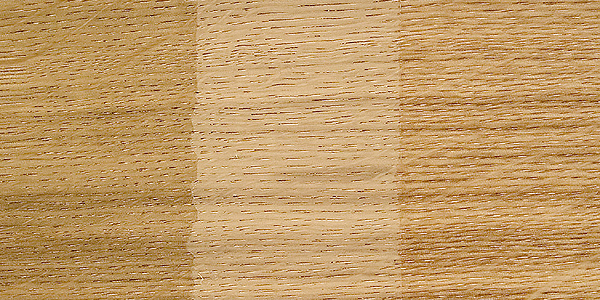
Radial cut
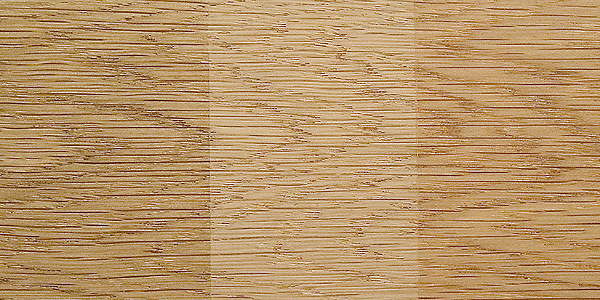
Tangential cut
Käyttö
- Oak wood is excellent for furniture, and it is also well suitable for doors and window frames.
- Veneer, furniture, parquets and boats are produced from oak wood.
- Thanks to its hard texture and rot resistancy, oak has been used to build sailing ships.
- Oak has traditionally been used for barrels.
- The bark of mediterranean cork oak is used to make sheets of insulation and bottlestoppers
